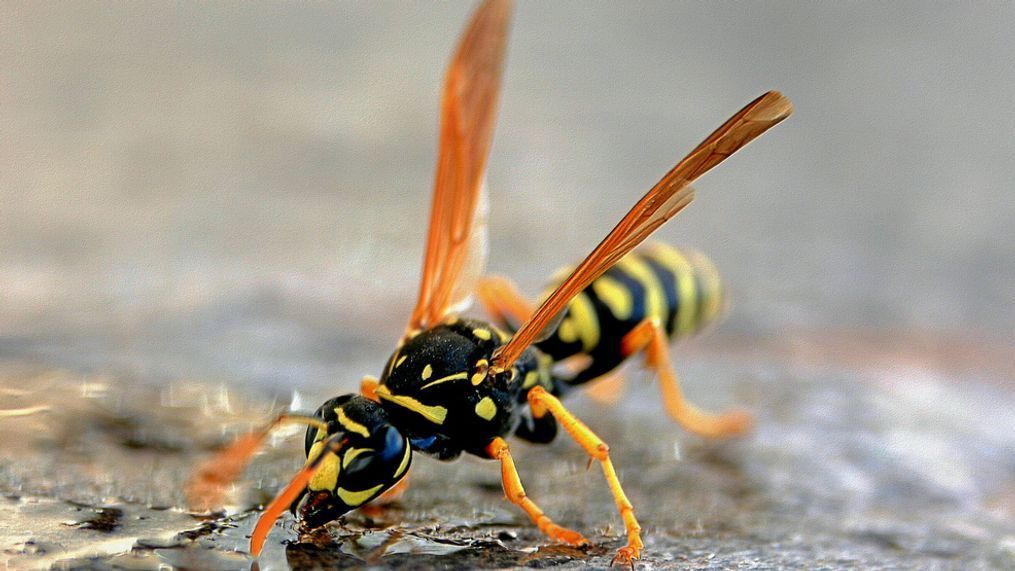Yellowjackets ruining your picnic? Here's what the buzz is all about

CORVALLIS, Ore. – Have you had yellowjackets interrupt your picnic or yardwork?
Here's what all the buzz is about.
Western Oregon residents are seeing more yellowjackets than usual in their yards and gardens this year, according to Gail Langellotto, an Oregon Sate University Extension entomologist.
“Oh, yes, they are cruising all over," Langellott said. "It’s so dry in surrounding areas that gardens are providing them with things that unmanaged environments are not – like water.”
You'll also see yellowjackets eating pollen from flowers, a behavior triggered by the dry conditions, according to OSU.
That's why you should hold off on reaching for pesticides: You might kill the wrong insect.
“Bees are super concentrated, too,” Langellotto said. “Gardens are a really important resource right now. I’m not fan of the pesticides used to control yellow jackets. With a super-pressurized spray that can go 20 feet, so many things can go wrong.”
Instead, Oregon State recommends:
- Keeping garbage covered
- Picking up fallen fruit
- Using caution around water spigots and water features, where yellowjackets gather on hot days
- Using traps around dining areas
“Yellowjackets have their place," said Heather Stoven, a horticulturist with Oregon State University Extension Service. "Although they can be seen as pests due to their attraction to our food when we are dining outdoors, in typical scenarios they are beneficial insects, feeding on insects such as caterpillars that might otherwise damage your garden.”
According to OSU, yellowjackets are heavy-bodied, with black and yellow or white markings and live in gray, papery nests, which are mainly located below ground but some are suspended above.
Worker yellowjackets hunt for insects, carrion or rotting fruit to carry back to the nest to feed their nest-mates. If you accidentally come close to or contact a nest entrance, you're likely to get stung. Workers vigorously defend the nest and queen. Their sting is more painful than honey bees and normally no stinger remains in the skin. A single yellowjacket may sting more than once.
A queen is the epicenter of each nest and her sole responsibility is to lay eggs. She begins a nest in the spring by laying a few eggs and raising the adults. Workers provision, expand and defend the nest.
As spring and summer pass, the nest grows and new workers assume their role. By the end of summer, nests may contain hundreds or thousands of workers. By August or September, their population is at its highest.
By fall, yellowjacket nests have produced a crop of new queens and males. By the first frost, most workers and queens leave the nest to find a protected spot to spend the winter. They emerge in spring to begin the cycle again. Only new queens survive the winter, however, and they almost never reuse the previous year's nest.
If you locate a nest and decide you have no choice but to destroy it, Longellott said to first locate the entrance.
Wear protective gear that covers your skin, and carefully mark the nest entrance. This will help you to find and treat the nest on a cool night, when workers are inside and relatively calm. Use an insecticide that is labelled for yellowjacket control, and follow all directions for use. A quick-acting, knockdown pesticide should be used, to keep yellowjackets from flying out of the nest. Do not use a flashlight when treating a yellowjacket nest at night.The wasps are attracted to light.
Use the least toxic product first; choose a product with “Caution” on the label rather than “Warning” or “Danger.”
Don't pour petroleum products into ground nests. It is dangerous, environmentally harmful and illegal. Use products specifically made for yellowjacket control only. Be sure to read and follow the pesticide product label. Remember, the label is the law.
If your goal is to control yellowjackets, try a non-toxic trap.
The most effective use a synthetic attractant to lure worker yellowjackets into the trap. Fruit juice or meat can be used as attractants as well. Traps may provide temporary relief by drawing workers away from people, but they are not effective for area-wide nest control.
Persons particularly sensitive to yellowjacket venom should be extra cautious in late summer and early fall, when the insects are most numerous. Enlist the help of someone not as sensitive, if you need to spray a nest.
